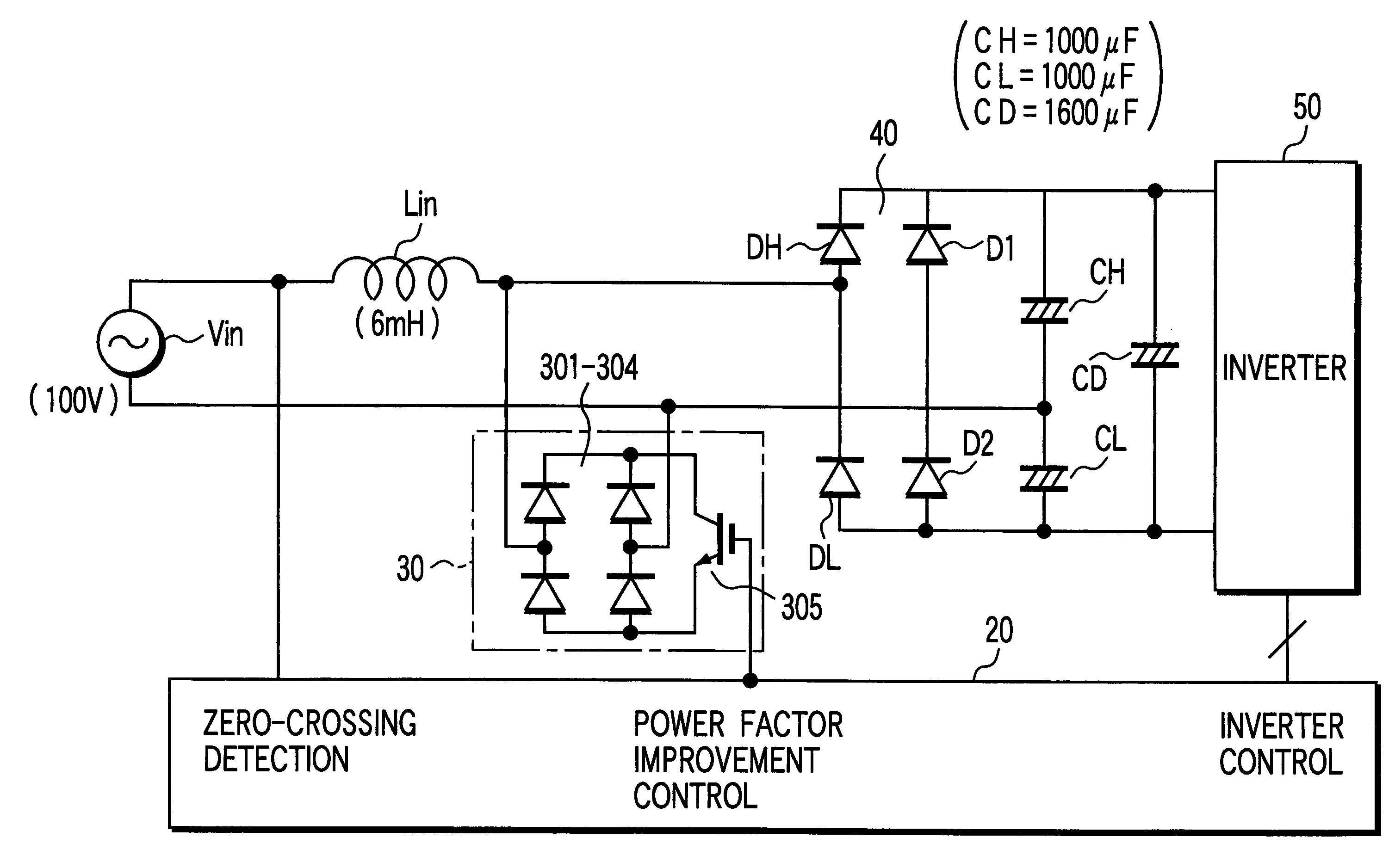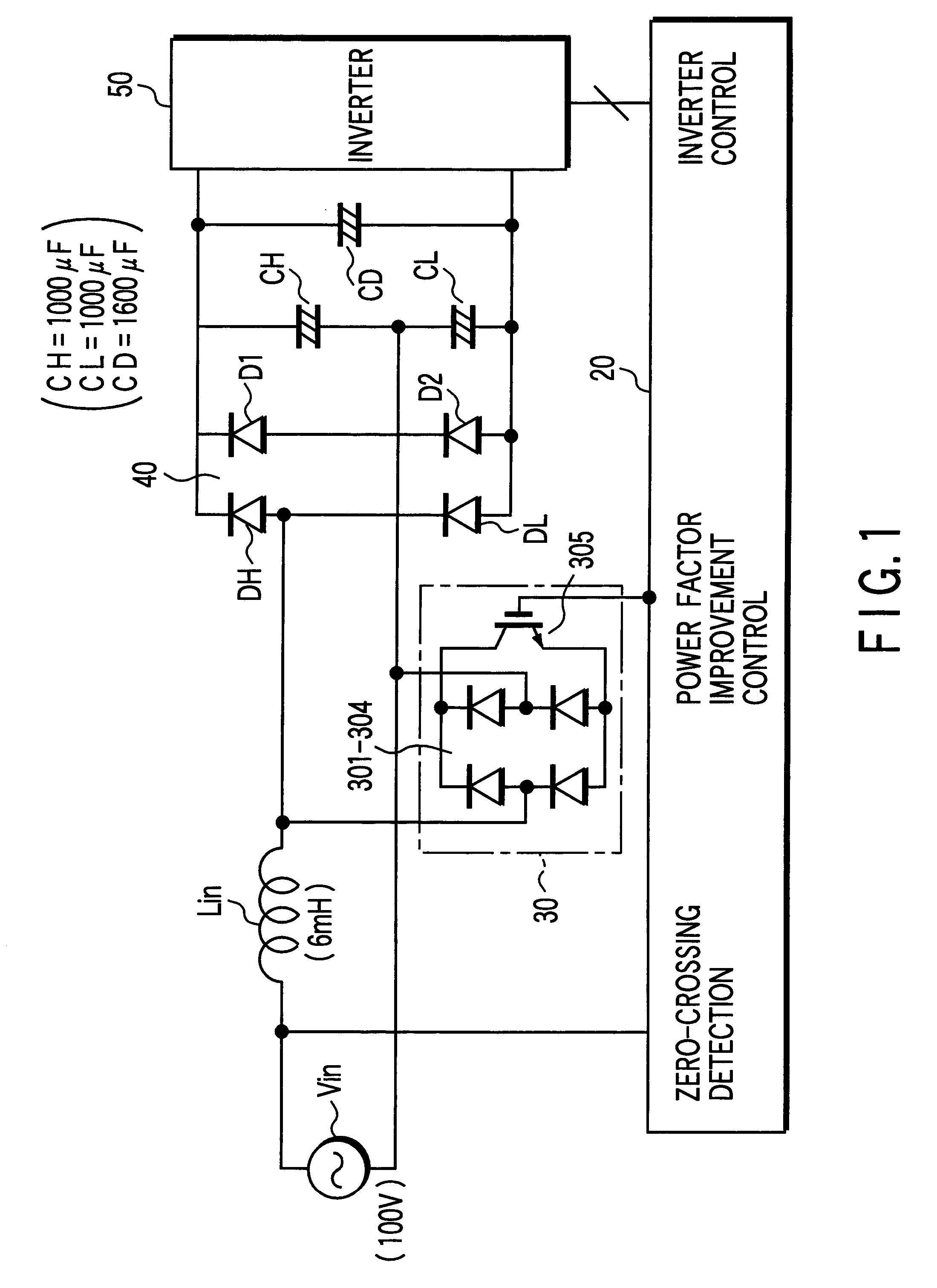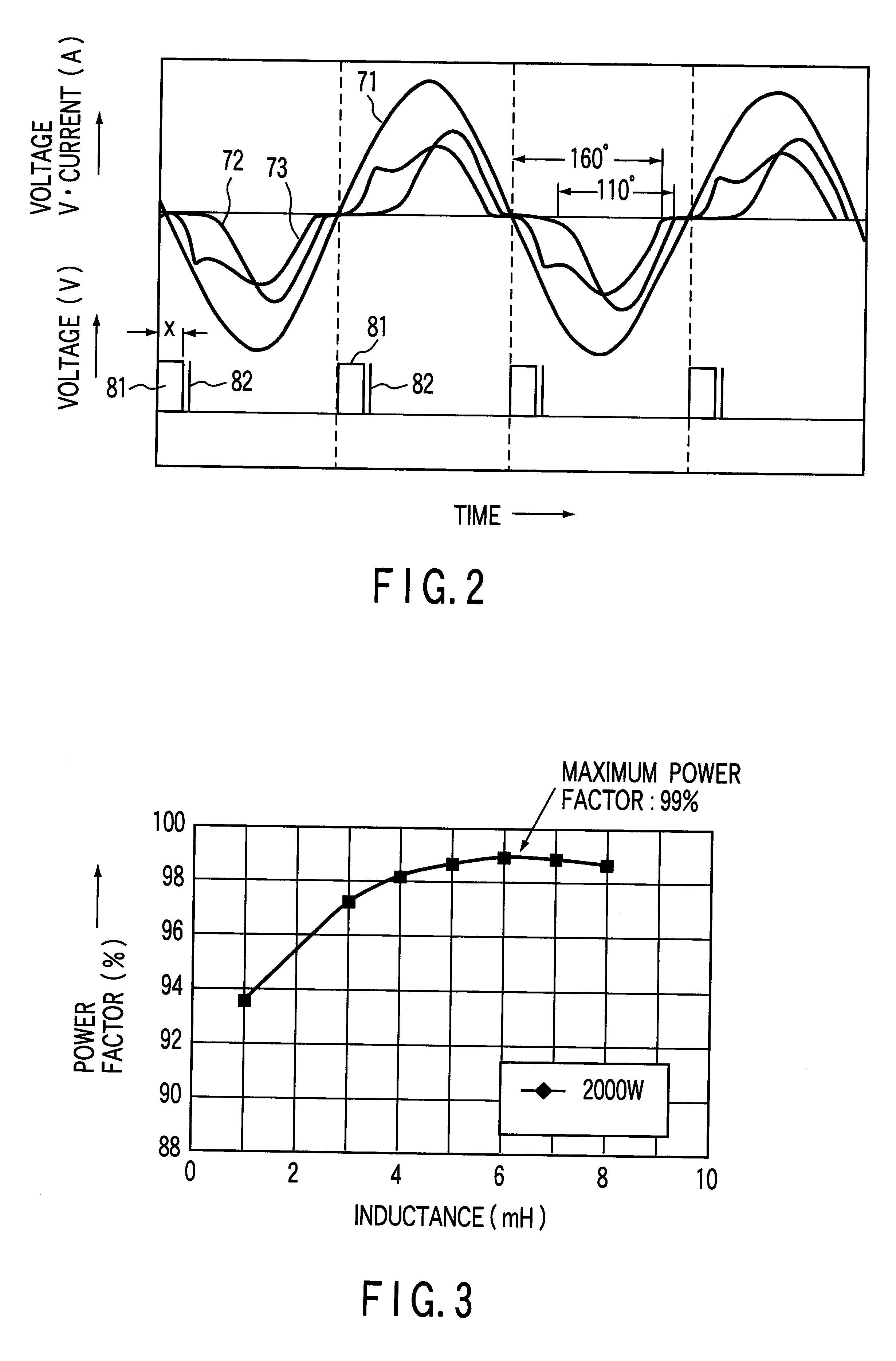Power conversion apparatus and air conditioner using the same
- Summary
- Abstract
- Description
- Claims
- Application Information
AI Technical Summary
Benefits of technology
Problems solved by technology
Method used
Image
Examples
first embodiment
FIG. 1 is a circuit diagram showing the arrangement of a power conversion apparatus according to the present invention.
The same reference numerals as in FIG. 17 showing a conventional apparatus including a conversion section and an inversion section according to the present invention, as described above, denote the same parts in FIG. 1, and a description thereof will be omitted.
In the first embodiment, a booster 30 is connected between the load terminal of a reactor Lin connected to one terminal of an AC power supply Vin, and the other terminal of the AC power supply Vin.
An outdoor controller 20 serving as a control unit including a microcontrol unit (MCU) detects the zero-crossing point of the AC power supply Vin, and controls the booster 30 and an inverter 50.
The booster 30 is made up of four bridge-connected diodes 301 to 304 and one insulated-gate bipolar transistor (IGBT) 305.
The four diodes 301 to 304 constitute a full-wave rectifying circuit. The AC input terminal of the full...
second embodiment
FIG. 4 is a circuit diagram showing the arrangement of a power conversion apparatus according to the present invention.
In the second embodiment, the AC power supply voltage is in 200V class. The same reference numerals as in FIG. 17 showing a conventional apparatus denote the same parts in FIG. 4, and a description thereof will be omitted.
In the second embodiment, similar to the case of the AC power supply voltage in 100V class, a reactor Lin is connected between an AC power supply Vin and the AC terminal of a full-wave rectifying circuit made up of bridge-connecting diodes 301 to 304.
The AC input terminal of a booster 30 is connected to the load terminal of the reactor Lin, and the DC output terminal thereof is connected to an IGBT 305.
An outdoor controller 20 including a microcontrol unit (MCU) detects the zero-crossing point of the AC power supply Vin, and controls the IGBT 305 of the booster 30 and an inverter 50.
The power conversion apparatus shown in FIG. 4 processes a large l...
third embodiment
FIGS. 13A and 13B are a circuit diagram showing the arrangement of a power conversion apparatus according to the present invention, and a waveform chart of a power factor improvement control pulse, respectively.
The same reference numerals as in FIG. 4 denote the same parts in FIG. 13A, and a description thereof will be omitted.
If one reactor as the reactor Lin shown in FIG. 4 is given a predetermined inductance, e.g., an inductance of 14 to 20 mH, the power conversion apparatus of the third embodiment increases in size and weight, and may generate large frequency noise.
Using a reactor having such an inductance makes it relatively difficult to manufacture and handle the power conversion apparatus and reduce noise.
In the third embodiment, as shown in FIG. 13A, first and second reactors Lin1 and Lin2 are series-connected in consideration of these situations.
Each of the first and second reactors Lin1 and Lin2 has an inductance of 7.5 mH, and has substantially the same shape and natural ...
PUM
 Login to View More
Login to View More Abstract
Description
Claims
Application Information
 Login to View More
Login to View More - R&D
- Intellectual Property
- Life Sciences
- Materials
- Tech Scout
- Unparalleled Data Quality
- Higher Quality Content
- 60% Fewer Hallucinations
Browse by: Latest US Patents, China's latest patents, Technical Efficacy Thesaurus, Application Domain, Technology Topic, Popular Technical Reports.
© 2025 PatSnap. All rights reserved.Legal|Privacy policy|Modern Slavery Act Transparency Statement|Sitemap|About US| Contact US: help@patsnap.com



